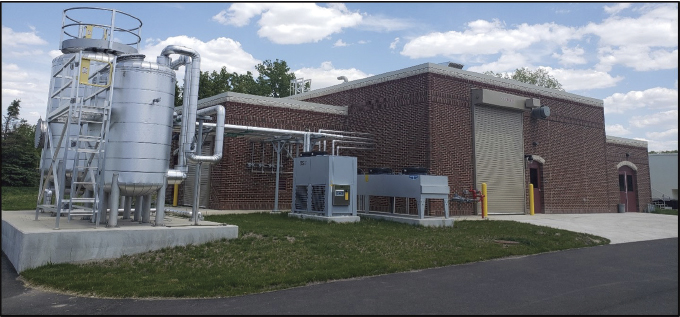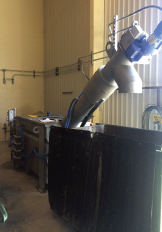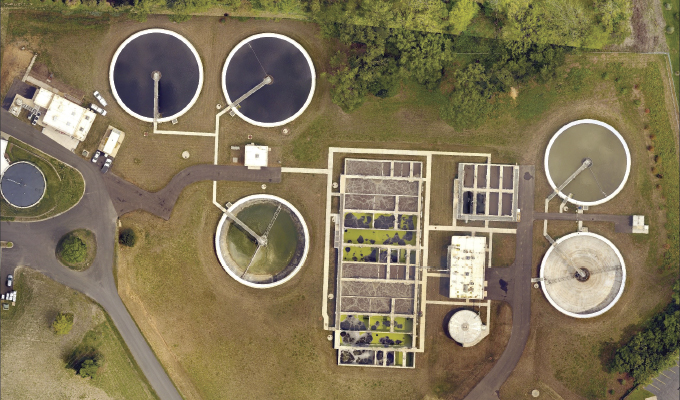When investing in new equipment, what would you consider to be a reasonable payback? Five years? Three years?
At the Kishwaukee Water Reclamation District (KWRD) in Illinois, how about just fourteen months. This utility, with its net zero energy plan and biogas plant, could be described as a blueprint for future treatment plants, but it is also very much in the now; totally committed to being an exemplary environmental steward. It believes in “Clean the Kish”; the Kishwaukee River, known locally as “The Kish,” a 63.4-mile-long stretch of water whose name derives from the Native American Potowatomi word for “River of the Sycamore.” Recovering resources to protect public health at KWRD is a fundamental ongoing aim and considered necessity—and to achieve it in the best possible and economically viable way for the 50,000 people it serves.
Kishwaukee’s clean green renewable energy, nutrient-rich biosolids and eight acres of native prairies, encouraging butterflies and enhancing the beauty of the area—all sounds extremely positive, and it is—but what about the slightly less dashing image of septage?

TRYING NEW SOLUTIONS
Far enough out of Greater Chicago, close to agricultural land and homes with septic tanks, KWRD realized that their location was advantageous for septage collection, and that there was a gap in the market; confirmed by an approach from a septic hauling firm that was looking for a receiving station. So in 2012, this enterprising facility in Dekalb, Illinois (65 miles from Chicago), began taking in septage, which was dumped into a manhole on site that combined with the main influent flow. Word soon spread, and by offering very competitive rates of $0.035 per gallon, septage fees were fast stacking up, with the plant taking in 442,000 gallons of septage in the first year alone. As more and more haulers, from around a 50-mile radius, chose Dekalb as their unloading site, the treatment plant had to deal with volumes that rose to 704,000 gallons in 2013, all the way up to 2.6 million gallons in 2016.
“Creating regular revenue towards the overall running of our facility has been extremely useful,” says Mike Holland, assistant district manager at Kishwaukee Water Reclamation District, “but by its very nature, septage presents challenges, so with an increasing amount of debris, our screens would become blinded and needed cleaning manually. This meant more labor and also more man-hours of troubleshooting, because the flows could mess with our controls. We finally reached a point where we needed to screen the septage separately and have more control.”
In 2017, Holland and his colleagues considered a new single screen system, specifically designed for the handling of septage.
VERY POSITIVE REPORTS

“We looked at some different manufacturers,” Holland says, “including Lakeside Equipment Corporation, who we’d always heard very positive reports. We went to visit two of their plants to see for ourselves, and it was more about what we didn’t hear. None of the operators talked about problems—just that the equipment was very easy to maintain, clearly built to last, and didn’t involve much time to manage it. We also sought advice from LAI, Ltd. in Rolling Meadows, a manufacturers’ representative firm serving the water, wastewater, and stormwater markets, from who we had previously bought equipment.”
After careful consideration, Kishwaukee Water Reclamation District chose Lakeside Equipment Corporation’s Septage Acceptance Plant (SAP), a small-footprint, pre-engineered, self-contained, fully automated unit with a full-penetration rake-head that removes debris and inorganic solids that typically pass through a conventional bar screen. To pre-treat septage, the SAP is anchored by the reliable, heavy-duty Raptor® Fine Screen. By capturing the debris from the septage, damage to downstream equipment such as clogging pumps/valves, decreasing aeration effectiveness, plus dewatering/filtering equipment and sludge digestion, is prevented.
“We have around fifteen septic haulers that use our facility,” adds Holland. “Our intake now exceeds four million gallons per year, but apart from having to clean out the SAP’s rock trap once per week, the Lakeside system takes care of everything—and we also know exactly which haulers have come in, at what time, and how much they have dumped.”
Installed in 2018, the Lakeside SAP at Dekalb provides security access, load management, and invoicing capabilities. Haulers receive access by the plant’s assigned PIN that activates the system, opens the inlet flow control valve, allowing the hauler to select one of five waste types on a touch screen.
PAYBACK OF JUST FOURTEEN MONTHS
Holland continues, “Taking in septage has become a significant revenue stream for us, keeping wastewater treatment costs down for our citizens. Daily, around five to ten vehicles visit us during our main hours, each depositing about 3,500 gallons per time. The access code makes everything easy. Payback of just fourteen months far exceeded our expectations. The Lakeside SAP has really been an awesome addition to our facility.”
FOR MORE INFORMATION
Dan Widdel is regional sales manager at Lakeside Equipment Corporation. Lakeside Equipment Corporation is an engineering and manufacturing company concentrating on helping to improve the quality of our water resources. Lakeside started in the spring of 1928 to engineer, develop, and provide water purification systems to municipalities and companies throughout North America. For more information, visit www.lakeside-equipment.com.
MODERN PUMPING TODAY, April 2023
Did you enjoy this article?
Subscribe to the FREE Digital Edition of Modern Pumping Today Magazine!


